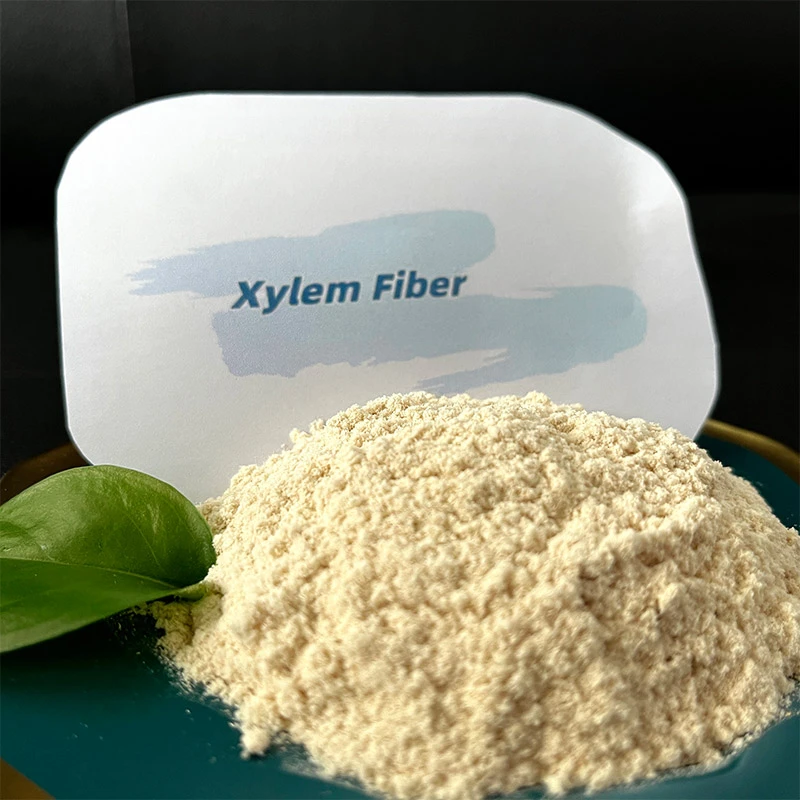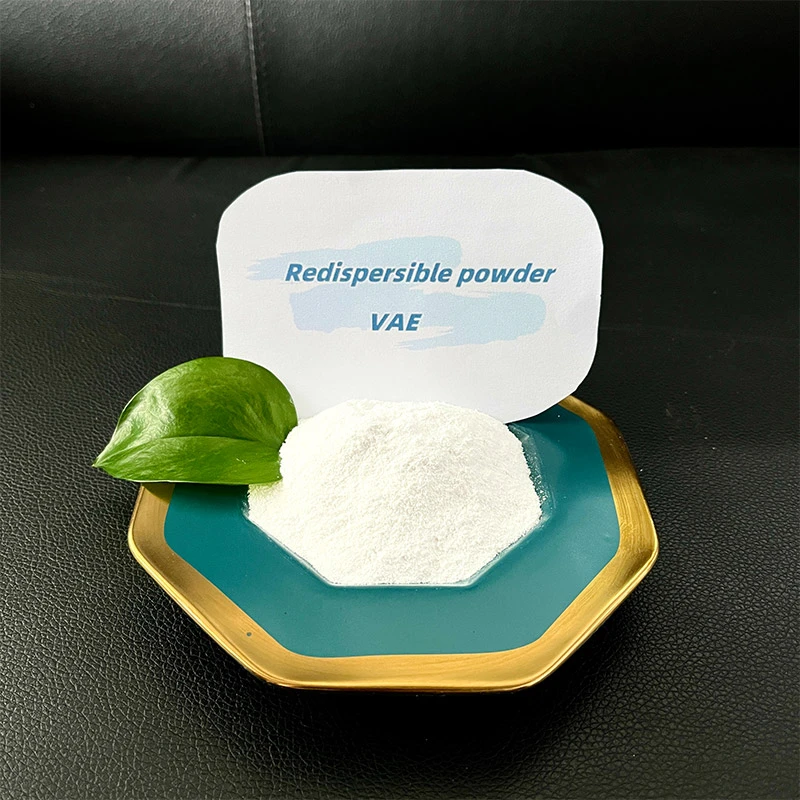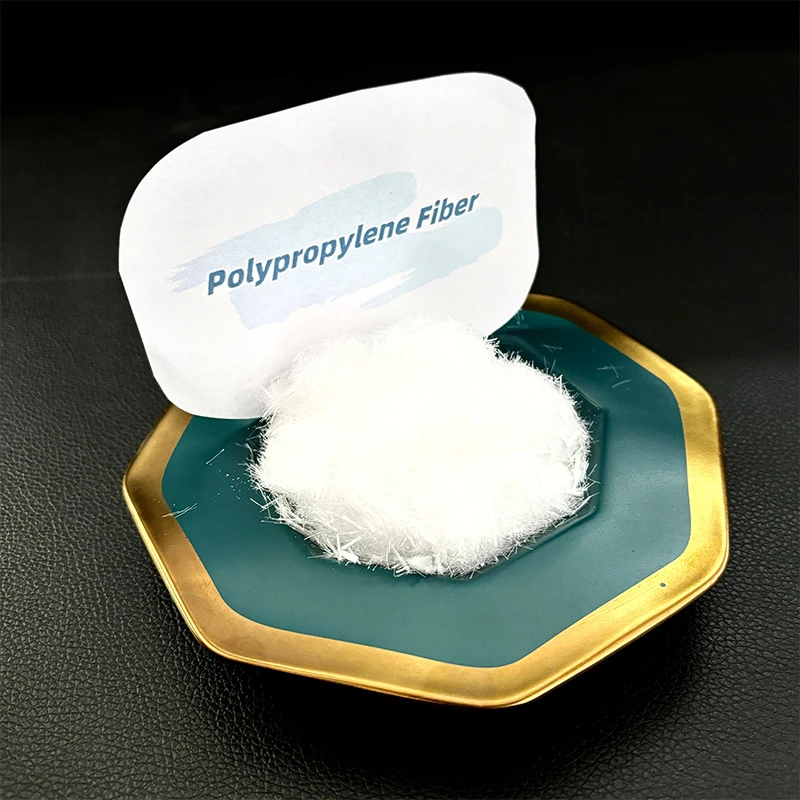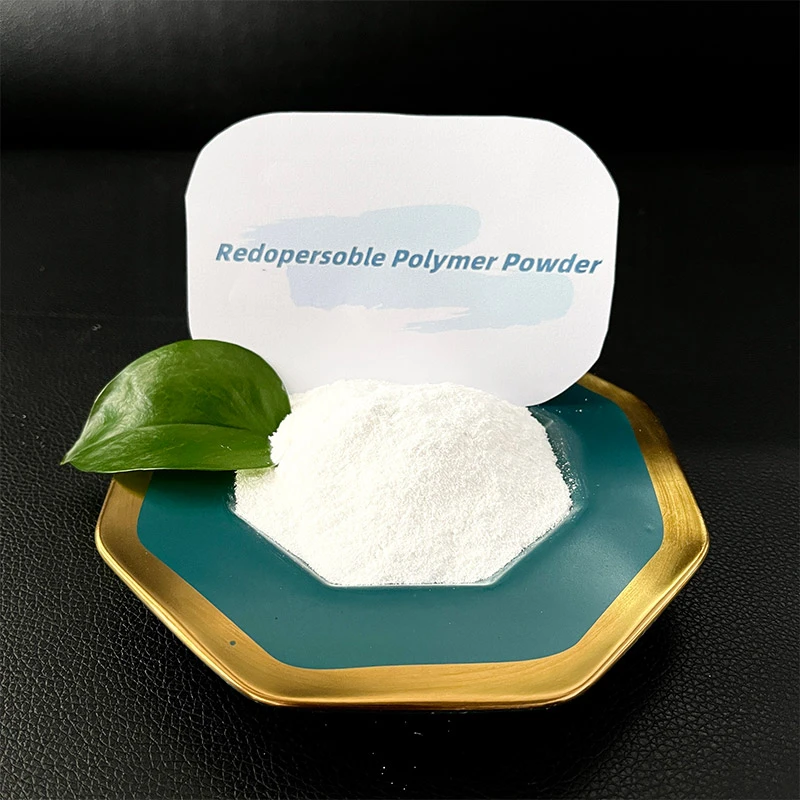
-

Add: HeBei ShengShi HongBang Cellulose Technology CO.,LTD.
-

Email
13180486930@163.com -

CONTACT US
+86 13180486930

Premium Hydroxypropyl Methyl Cellulose (HPMC) | Thickener & Binder
Unlocking Performance: The Power of Hydroxypropyl Methyl Cellulose HPMC in Modern Industries
In the vast landscape of industrial chemicals, certain compounds stand out for their versatility and indispensable contributions across diverse sectors. Among these, Hydroxypropyl Methyl Cellulose HPMC reigns supreme as a multi-functional polymer derived from natural cellulose. Its unique blend of properties makes it a cornerstone in everything from construction materials to pharmaceuticals and food products. This comprehensive guide delves into the intricate world of Hydroxypropyl Methyl Cellulose HPMC, exploring its profound impact, technical specifications, manufacturing intricacies, and the critical role it plays in driving innovation and efficiency in today's demanding markets.
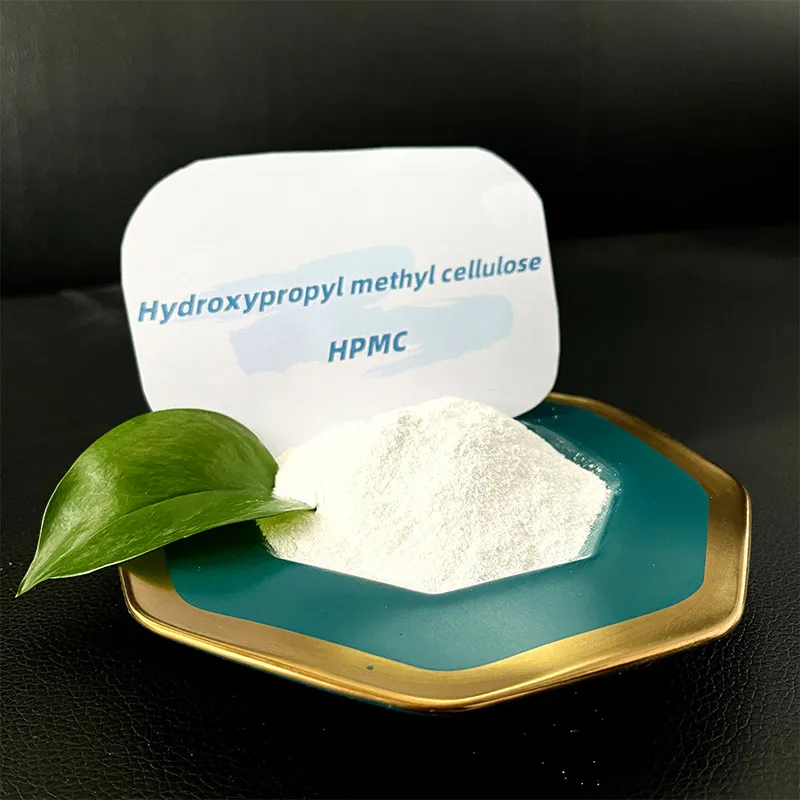
Industry Trends and Market Dynamics for Hydroxypropyl Methyl Cellulose HPMC
The global market for Hydroxypropyl Methyl Cellulose HPMC is experiencing robust growth, driven by an escalating demand in the construction sector, particularly for dry-mix mortars, tile adhesives, and self-leveling compounds. According to a report by Grand View Research, the global cellulose ethers market size was valued at USD 6.5 billion in 2022 and is expected to grow at a compound annual growth rate (CAGR) of 5.5% from 2023 to 2030, with HPMC being a significant contributor. This growth is fueled by increasing urbanization, infrastructure development, and the rising adoption of sustainable building materials. Beyond construction, the pharmaceutical industry’s continuous innovation in drug delivery systems and the food industry's need for functional additives are also pivotal drivers for Hydroxypropyl Methyl Cellulose HPMC. The trend towards sustainable and bio-based products further cements HPMC's position as a preferred additive due to its derivation from renewable resources.
- Sustainable Solutions: Growing emphasis on eco-friendly and bio-degradable additives favors Hydroxypropyl Methyl Cellulose HPMC as a cellulose derivative.
- Construction Boom: Rapid infrastructure development in emerging economies and renovation activities in developed regions boost demand for performance additives like HPMC in mortars, plasters, and coatings.
- Pharmaceutical Advancements: Increased investment in drug formulation, especially for controlled-release systems and vegetarian capsules, drives HPMC consumption.
- Food & Beverage Innovations: HPMC's role as a thickener, emulsifier, and stabilizer in healthier and plant-based food products is expanding.
- Regulatory Compliance: Strict quality and safety standards (e.g., ISO, FDA, GMP) necessitate reliable and compliant raw materials, underscoring the importance of high-quality Hydroxypropyl Methyl Cellulose HPMC.
Understanding the Technical Parameters of Hydroxypropyl Methyl Cellulose HPMC
Hydroxypropyl Methyl Cellulose HPMC is a complex polymer whose performance is dictated by several key technical parameters. Understanding these parameters is crucial for selecting the correct grade for a specific application.
- Viscosity: This is arguably the most critical parameter, measured in mPa·s (millipascal-seconds) or cps (centipoise). It indicates the resistance of a fluid to flow and directly influences the thickening, water retention, and workability properties. HPMC grades vary widely from low viscosity (e.g., 50 mPa·s) for thin coatings to high viscosity (e.g., 200,000 mPa·s) for tile adhesives.
- Degree of Substitution (DS): This refers to the average number of hydroxyl groups per anhydroglucose unit that have been substituted by methoxyl groups. A higher DS generally leads to increased hydrophobicity and better film-forming properties.
- Molar Substitution (MS): This indicates the average number of moles of hydroxypropyl groups per anhydroglucose unit. MS influences thermal gelation and solubility.
- Gelation Temperature (Thermal Gelation): Hydroxypropyl Methyl Cellulose HPMC exhibits unique thermal gelation properties, meaning it forms a gel upon heating and reverts to a solution upon cooling. This temperature varies based on the degree of substitution and influences its application in high-temperature processes.
- pH Stability: HPMC typically shows excellent stability across a wide pH range (typically 3-11), making it suitable for various chemical environments.
- Particle Size: Finer particles dissolve faster and are preferred for applications requiring quick hydration, while coarser particles might be used for delayed dissolution or specific rheological profiles.
- Purity: High purity is essential, especially for pharmaceutical and food-grade applications, ensuring minimal impurities and adherence to regulatory standards (e.g., USP, EP, FCC).
Key Technical Parameters of Common Hydroxypropyl Methyl Cellulose HPMC Grades
The table below illustrates typical ranges for various HPMC grades based on their primary applications. These values are indicative and can vary between manufacturers and specific product formulations.
| Parameter | Low Viscosity HPMC (e.g., E50) | Medium Viscosity HPMC (e.g., K100M) | High Viscosity HPMC (e.g., K200M) |
|---|---|---|---|
| Viscosity (2% solution, 20°C, mPa·s) | 20 - 150 | 75,000 - 150,000 | 150,000 - 200,000+ |
| Degree of Substitution (DS) | 1.2 - 1.6 | 1.3 - 1.8 | 1.3 - 1.8 |
| Molar Substitution (MS) | 0.1 - 0.3 | 0.1 - 0.4 | 0.1 - 0.4 |
| Gelation Temperature (°C) | 75 - 90 | 60 - 75 | 50 - 65 |
| Primary Applications | Film coatings, detergents, fine ceramics | Tile adhesives, renders, skim coats, food thickeners | Gypsum plasters, thick masonry mortars, controlled-release drugs |
| Typical Purity (%) | >99 | >99 | >99 |
| pH Range Stability | 3 - 11 | 3 - 11 | 3 - 11 |
The Manufacturing Process of Hydroxypropyl Methyl Cellulose HPMC: A Detailed Overview
The production of Hydroxypropyl Methyl Cellulose HPMC is a sophisticated chemical process that transforms natural cellulose into a versatile polymer with engineered properties. While exact procedures may vary slightly among manufacturers, the fundamental steps are consistent, ensuring a high-quality end product. Below is a detailed description of the typical manufacturing process, which, in an industrial setting, would be accompanied by a schematic diagram to visually represent the flow.
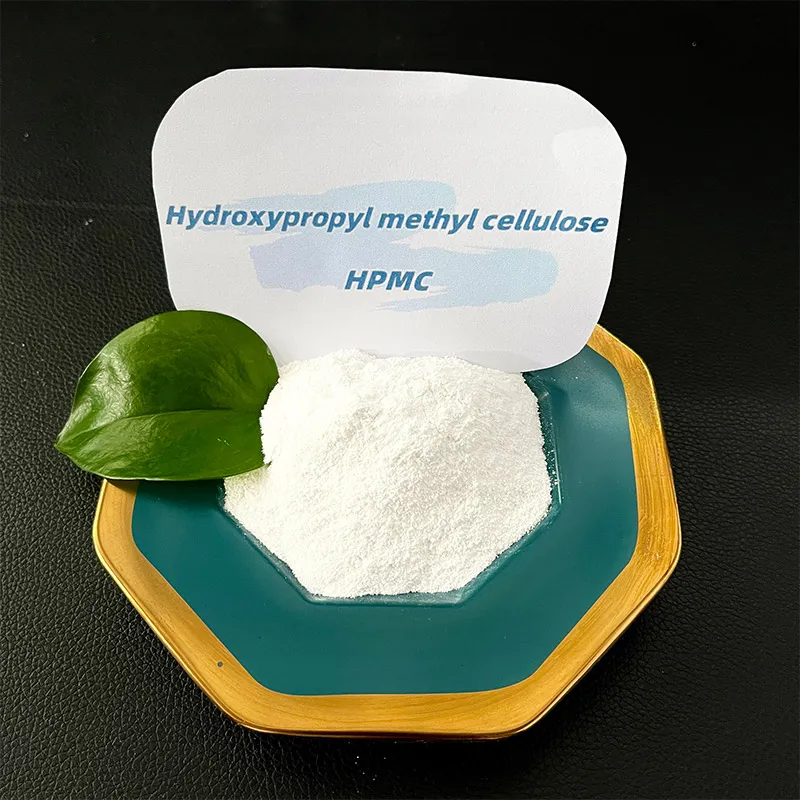
Manufacturing Process Flow:
- Raw Material Preparation (Cellulose Sourcing)
The primary raw material for HPMC is highly purified cellulose pulp, typically derived from wood or cotton linters. This cellulose must be of specific quality and purity to ensure the consistency and performance of the final product. The material is typically received in sheet or roll form and then shredded or milled into a fine powder to increase its surface area for subsequent reactions.
(Schematic Diagram: Cellulose Pulp Inflow > Shredding/Milling)
- Alkalization (Mercerization)
The prepared cellulose is reacted with a concentrated solution of caustic soda (sodium hydroxide, NaOH) in a controlled reactor. This crucial step, known as mercerization or alkalization, converts cellulose into alkali cellulose. The alkali treatment causes swelling of the cellulose fibers, breaking down the crystalline structure and making the hydroxyl groups more accessible and reactive for the upcoming etherification reaction. This step is critical for ensuring uniform substitution.
(Schematic Diagram: Milled Cellulose + NaOH Solution > Reactor > Alkali Cellulose)
- Etherification
The alkali cellulose is then transferred to an etherification reactor, where it reacts with two primary etherifying agents: methyl chloride (CH₃Cl) and propylene oxide (C₃H₆O). This is where the "Hydroxypropyl" and "Methyl" groups are introduced onto the cellulose backbone, forming the mixed ether. The ratio and concentration of these etherifying agents, along with reaction temperature and pressure, are carefully controlled to achieve the desired Degree of Substitution (DS) and Molar Substitution (MS), which in turn dictate the final HPMC product's viscosity and thermal gelation properties. This is a complex, exothermic reaction requiring precise control to ensure homogeneity and prevent side reactions.
(Schematic Diagram: Alkali Cellulose + Methyl Chloride + Propylene Oxide > High-Pressure Reactor > Crude HPMC)
- Neutralization
After the etherification reaction is complete, the crude Hydroxypropyl Methyl Cellulose HPMC product still contains residual alkali and unreacted etherifying agents. It is then neutralized, typically with a dilute acid (e.g., acetic acid) to bring the pH to a neutral or slightly acidic range, suitable for the next purification steps.
(Schematic Diagram: Crude HPMC > Neutralization Tank + Acid > Neutralized HPMC Slurry)
- Washing and Purification
This is a critical step for achieving the high purity required for many Hydroxypropyl Methyl Cellulose HPMC applications, especially pharmaceutical and food grades. The neutralized slurry undergoes multiple washing cycles with hot water. Hot water effectively dissolves and removes salts (like NaCl, byproduct of methyl chloride reaction) and other water-soluble impurities. This process continues until the desired level of purity is reached, often monitored by conductivity measurements of the wash water. Efficient washing is crucial for product quality and stability.
(Schematic Diagram: Neutralized HPMC Slurry > Hot Water Washing Tanks (Multi-stage) > Washed HPMC Cake)
- Drying
The purified Hydroxypropyl Methyl Cellulose HPMC wet cake, still containing significant moisture, is then dried. This is typically done using hot air dryers (e.g., flash dryers or fluid bed dryers) to reduce the moisture content to a specified level, usually below 5%. Controlled drying prevents degradation and ensures product stability during storage. The temperature and residence time are carefully managed to avoid thermal decomposition.
(Schematic Diagram: Washed HPMC Cake > Dryer > Dried HPMC Granules)
- Grinding and Sieving (Milling and Screening)
The dried Hydroxypropyl Methyl Cellulose HPMC material is typically in a granular or irregularly shaped form. It is then milled or ground to achieve the desired particle size distribution. Different applications require different particle sizes – finer for quick dissolution, coarser for specific rheological properties or longer open times in construction. After grinding, the powder is sieved to ensure uniform particle size and remove any oversized particles.
(Schematic Diagram: Dried HPMC Granules > Grinder > Sieving > Final HPMC Powder)
- Packaging and Quality Control
The final Hydroxypropyl Methyl Cellulose HPMC powder is then packaged into multi-ply paper bags, bulk bags, or other suitable container111s, often with moisture barriers to protect against humidity. Throughout the entire process, rigorous quality control checks are performed at each stage, from raw material inspection to in-process testing (pH, viscosity, moisture, purity) and final product analysis. Adherence to international standards such as ISO 9001, along with specific industry standards like ASTM, USP, EP, or FCC, is paramount to ensure consistent quality, performance, and safety. The product's shelf life is typically 24 months when stored in original, unopened packaging under dry conditions.
(Schematic Diagram: Final HPMC Powder > Packaging > Quality Control > Shipment)
This meticulous manufacturing process, involving precise control over material inputs, reaction conditions, and purification steps, ensures that the resulting Hydroxypropyl Methyl Cellulose HPMC consistently meets the high standards required for its diverse and demanding applications.
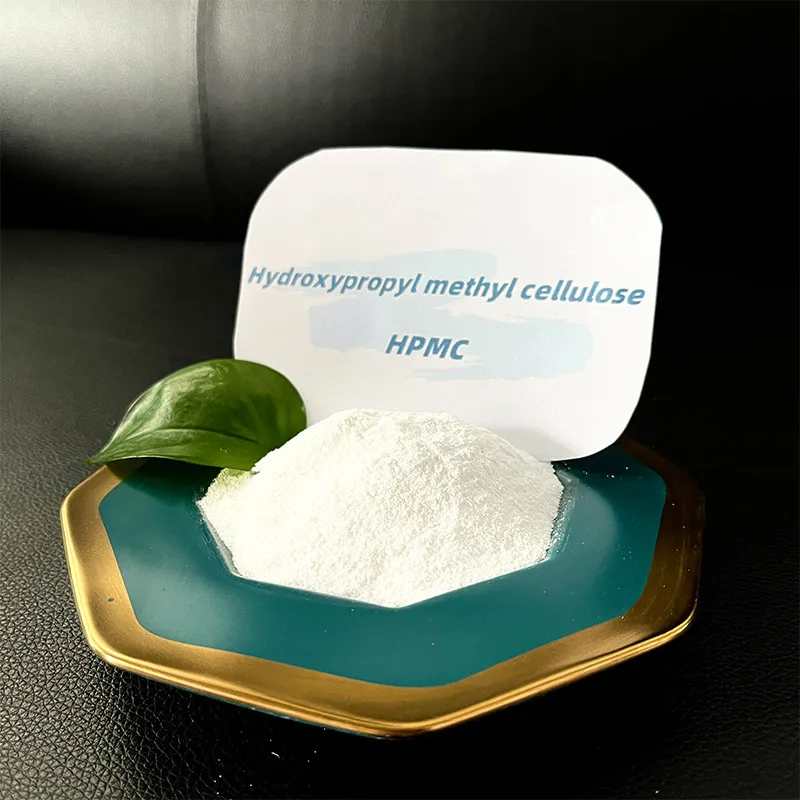
Extensive Application Scenarios of Hydroxypropyl Methyl Cellulose HPMC
The adaptability of Hydroxypropyl Methyl Cellulose HPMC allows its widespread use across numerous industries, each benefiting from its unique set of properties.
- Construction Industry (Applicable Industry: Building Materials, Chemical Construction)
HPMC is an indispensable additive in dry-mix construction materials due to its excellent water retention, thickening, and binding capabilities. It significantly improves the workability, adhesion, and open time of mortars, renders, and tile adhesives.
- Tile Adhesives: Enhances water retention for proper cement hydration, improves anti-sag properties for vertical applications, and extends open time for easier installation. This contributes to stronger, more reliable bonds.
- Skim Coats & Wall Putties: Provides smooth workability, prevents cracking, and ensures consistent surface quality. Its film-forming ability improves surface hardness and abrasion resistance.
- Self-leveling Compounds: Acts as a rheology modifier, preventing segregation of aggregates and ensuring a smooth, level surface.
- Renders & Plasters: Improves adhesion to various substrates, reduces shrinkage, and enhances crack resistance, leading to more durable and aesthetically pleasing finishes.
- Gypsum Products: Controls setting time, improves plasticity, and reduces water demand.
Technical Advantage: In the construction sector, HPMC's ability to control rheology, enhance water retention (preventing premature drying, especially in hot climates), and improve adhesion significantly boosts the efficiency and durability of building materials, directly contributing to energy savings by reducing waste and rework, and enhancing structural integrity (thus indirect long-term energy savings in maintenance).
- Pharmaceutical Industry (Applicable Industry: Pharma, Healthcare)
Pharmaceutical-grade Hydroxypropyl Methyl Cellulose HPMC (meeting USP, EP, JP, and FCC standards) is widely used as a excipient.
- Tablet Binders: Improves tablet strength and reduces friability.
- Film-forming Agents: Used in tablet coatings to protect active ingredients, mask taste, and control drug release.
- Controlled-release Matrix: Forms a gel matrix that controls the dissolution rate of active pharmaceutical ingredients (APIs), allowing for sustained or extended drug release. This is critical for patient compliance and therapeutic efficacy.
- Ophthalmic Solutions & Artificial Tears: Provides viscosity and lubrication.
- Vegetarian Capsules: A plant-derived alternative to gelatin capsules, appealing to a wider consumer base.
Detection Standard: ISO 10993 for biocompatibility, USP & EP monographs for purity and performance, GMP (Good Manufacturing Practices) for production.
- Food Industry (Applicable Industry: Food & Beverage, Nutraceuticals)
Food-grade Hydroxypropyl Methyl Cellulose HPMC (meeting FCC standards) acts as a thickener, emulsifier, stabilizer, and suspending agent.
- Baked Goods: Improves texture, moisture retention, and shelf life.
- Dairy Products & Desserts: Enhances mouthfeel, prevents syneresis, and stabilizes emulsions.
- Meat Substitutes: Provides binding and textural properties, crucial for plant-based food products.
- Sauces & Dressings: Controls viscosity and ensures suspension of particles.
Technical Advantage: HPMC provides excellent thermal stability in food applications, preventing degradation during processing and ensuring consistent product quality, even in high-temperature cooking or pasteurization. Its non-allergenic and plant-based nature also offers broad consumer appeal.
- Cosmetics & Personal Care (Applicable Industry: Cosmetics, Personal Care)
Functions as a thickener, suspending agent, film former, and emulsion stabilizer in various personal care products.
- Shampoos & Lotions: Provides desirable viscosity and texture.
- Toothpastes: Acts as a binder and thickener.
- Makeup: Improves spreadability and adherence.
- Paints & Coatings (Applicable Industry: Coatings, Adhesives)
Used as a thickener, protective colloid, and rheology modifier, enhancing brushability, sag resistance, and color development.
Technical Advantages and Performance Superiority of Hydroxypropyl Methyl Cellulose HPMC
Hydroxypropyl Methyl Cellulose HPMC offers a distinct set of technical advantages that set it apart from other cellulose ethers and traditional additives, making it a preferred choice across industries. Its engineered structure provides superior performance where precise control over material properties is paramount.
- Exceptional Water Retention: HPMC’s primary strength, particularly in construction, is its ability to significantly retain water. This extends the open time and setting time of cementitious materials, allowing for proper hydration of cement particles and improved bond strength. For pharmaceutical and food applications, it ensures product stability and desired texture.
- Effective Thickening and Rheology Modification: HPMC acts as a highly efficient thickener, providing pseudoplastic flow properties. This means it thins under shear stress (e.g., mixing, pumping, spreading) but regains viscosity at rest, preventing sagging and ensuring excellent workability. This is crucial for applications like tile adhesives and paints, where ease of application combined with stability is essential.
- Thermal Gelation Property: Unlike many other polymers, HPMC solutions exhibit reversible thermal gelation. They become viscous gels upon heating and revert to liquid solutions upon cooling. This property is invaluable in food processing (e.g., preventing boil-over in sauces), pharmaceuticals (for sustained release formulations), and some industrial processes, offering unique textural and processing advantages.
- Excellent Film-Forming Capabilities: HPMC forms strong, flexible, and transparent films upon drying. This makes it ideal for tablet coatings in pharmaceuticals, protective layers in cosmetics, and binding agents in various formulations, enhancing durability and appearance.
- pH Stability: It maintains its properties over a broad pH range (typically 3-11), making it compatible with a wide array of chemical formulations and suitable for diverse industrial environments, including those with acidic or alkaline components.
- Suspension and Emulsion Stabilization: HPMC effectively suspends solid particles and stabilizes emulsions, preventing sedimentation or phase separation in liquid formulations. This is vital for consistent product quality in paints, cosmetics, and liquid detergents.
- Non-Ionic Nature: Being non-ionic, HPMC is less sensitive to salts and pH variations compared to ionic polymers, offering greater compatibility with other ingredients in complex formulations.
- Biocompatibility and Safety: High-purity grades of HPMC are biocompatible, non-toxic, and non-allergenic, making them safe for direct and indirect food contact, pharmaceutical ingestion, and cosmetic use, adhering to stringent standards such as FDA, USP, EP, and FCC.
- Versatile Solubility: It is readily soluble in cold water, forming clear solutions. Certain grades are also soluble in organic solvents or solvent mixtures, expanding its application range.
These combined advantages underscore why Hydroxypropyl Methyl Cellulose HPMC is a highly sought-after material for optimizing product performance, enhancing processing efficiency, and meeting stringent quality and safety requirements across a multitude of industries.
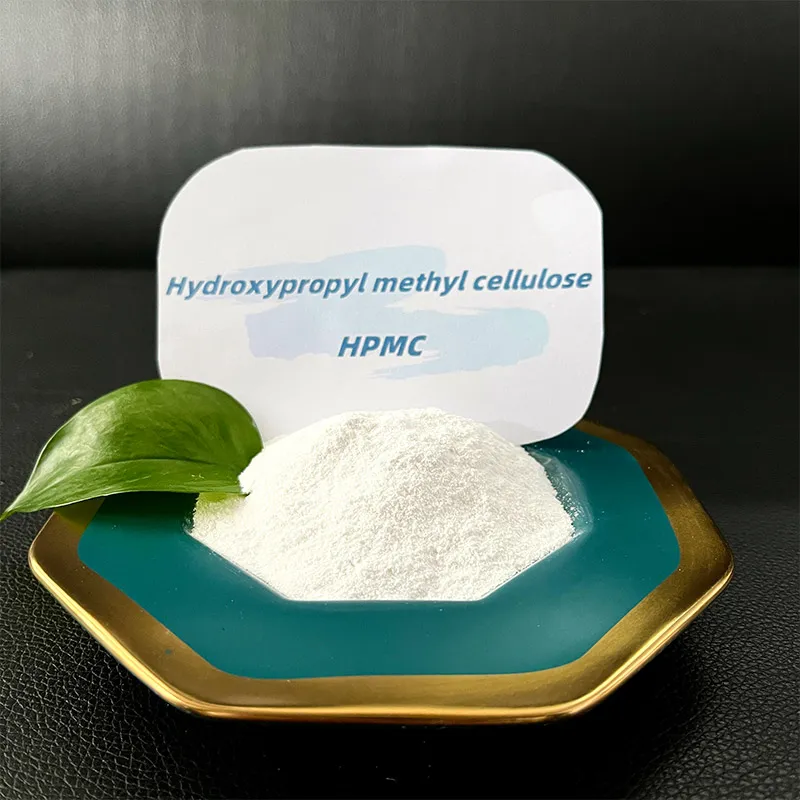
Choosing the Right Partner: Manufacturer Comparison and Selection Criteria
When sourcing Hydroxypropyl Methyl Cellulose HPMC, selecting a reputable manufacturer is paramount to ensure consistent quality, reliable supply, and appropriate technical support. While direct comparison of specific companies is outside the scope, here are critical factors to consider when evaluating potential suppliers:
- Quality Certifications & Standards: A leading manufacturer should adhere to international quality management systems like ISO 9001:2015. For specialized applications, look for adherence to GMP (Good Manufacturing Practices) for pharma, HACCP for food, and compliance with pharmacopoeias (USP, EP, JP) and food chemical codices (FCC). This demonstrates a commitment to consistent product quality and safety.
- R&D and Innovation Capabilities: A strong R&D department indicates a manufacturer's ability to develop new grades, optimize existing products, and provide customized solutions to evolving industry needs.
- Production Capacity & Supply Chain Reliability: Assess their capacity to meet your volume requirements and their track record for on-time delivery. A robust global supply chain is crucial for minimizing disruptions.
- Technical Support & Expertise: The ability to provide in-depth technical assistance, application guidance, and troubleshooting support is invaluable. A manufacturer with deep expertise in HPMC applications can help optimize your formulations.
- Customization Capabilities: Can they produce custom HPMC grades tailored to your specific viscosity, substitution, or particle size requirements? This flexibility is a significant advantage for specialized applications.
- Sustainability Practices: Evaluate their commitment to environmental responsibility, including raw material sourcing, production efficiency, waste management, and energy consumption. This aligns with modern industry trends and regulatory expectations.
- Customer Service & Responsiveness: Prompt communication, efficient order processing, and effective complaint resolution are hallmarks of a reliable partner.
- Pricing & Value Proposition: While cost is a factor, it should be weighed against the overall value, including product quality, technical support, and reliability of supply. The lowest price isn't always the best value.
Partnering with a manufacturer that excels in these areas, such as those with over 15 years of industry experience like SSHBHPMC, ensures access to high-quality Hydroxypropyl Methyl Cellulose HPMC and comprehensive support, fostering long-term collaborative success.
Customized Solutions and Application Cases of Hydroxypropyl Methyl Cellulose HPMC
One of the significant advantages of working with experienced HPMC manufacturers is the availability of customized solutions. Recognizing that standard grades may not always perfectly fit every niche application, leading suppliers can tailor Hydroxypropyl Methyl Cellulose HPMC to precise specifications, optimizing performance and cost-effectiveness. This involves adjusting parameters like viscosity, degree of substitution, purity, and particle size to meet unique formulation requirements.
Case Study 1: Enhancing Performance in High-Performance Tile Adhesives
Challenge: A major construction materials manufacturer in Europe needed to develop a new generation of tile adhesive capable of high bond strength and extended open time, even under extreme temperatures, while maintaining excellent workability for installers. Standard HPMC grades were not providing the desired balance of properties.
Solution: Collaborating closely with the client, our R&D team developed a custom Hydroxypropyl Methyl Cellulose HPMC grade. This involved fine-tuning the balance of methoxyl and hydroxypropyl groups (DS and MS) and optimizing the molecular weight distribution to achieve a specific rheological profile and superior water retention capability. The custom HPMC had a higher specific surface area and a tailored thermal gelation point.
Outcome: The new tile adhesive formulation, incorporating the customized HPMC, demonstrated a 25% increase in open time under hot and dry conditions (as per EN 12004 standards) and a 15% improvement in adhesion strength to challenging substrates. Customer feedback highlighted significantly easier application and reduced material waste, leading to a substantial competitive advantage for the client in the premium tile adhesive market. The optimized formulation also contributed to reduced re-work on job sites, indirectly leading to energy and resource savings.
Case Study 2: Optimizing Drug Release in Oral Formulations
Challenge: A pharmaceutical company was struggling to achieve a consistent and predictable sustained-release profile for a new drug compound. The active ingredient was highly water-soluble, leading to a rapid initial burst release when using conventional excipients, and existing HPMC grades offered inconsistent release kinetics.
Solution: We provided a pharmaceutical-grade Hydroxypropyl Methyl Cellulose HPMC with a precisely controlled high viscosity and a specific substitution pattern, allowing for more robust gel formation upon hydration. This particular HPMC grade was manufactured under stringent cGMP conditions, ensuring lot-to-lot consistency critical for pharmaceutical products.
Outcome: The optimized HPMC matrix provided a significantly smoother and more extended drug release profile, meeting the target pharmacokinetic parameters. In vitro dissolution tests showed a reduction in initial burst release by 30% and an extension of sustained release duration by over 4 hours. This enabled the client to successfully bring their new controlled-release medication to market, enhancing patient compliance and therapeutic efficacy. The product's compliance with USP and EP standards was a critical factor in regulatory approval.
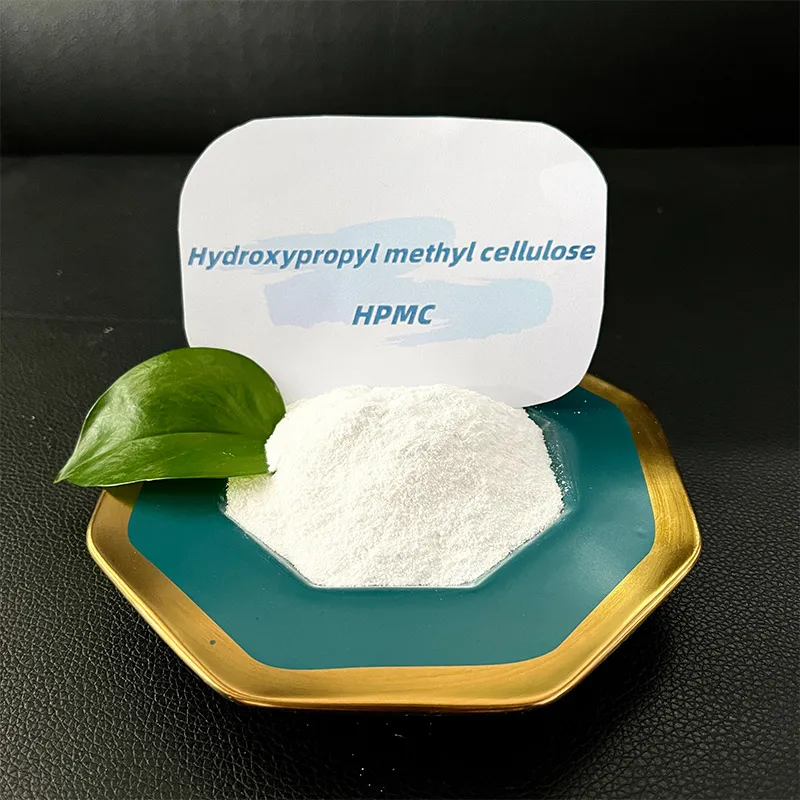
Case Study 3: Improving Texture and Stability in Plant-Based Meat Alternatives
Challenge: A food innovation company developing a new line of plant-based burger patties faced issues with texture (too crumbly or too rubbery) and moisture retention during cooking. Traditional binders were not delivering the desired 'mouthfeel' and cooking performance resembling animal protein.
Solution: We recommended a specific food-grade Hydroxypropyl Methyl Cellulose HPMC with unique thermal gelation properties and a medium viscosity profile. This HPMC forms a reversible gel upon heating, mimicking the fat melt and protein coagulation process in real meat, providing juiciness and a satisfying bite.
Outcome: The integration of this specialized HPMC significantly improved the texture, juiciness, and structural integrity of the plant-based patties, especially during cooking. The patties maintained their shape, browned well, and retained moisture, resulting in a product that closely mimicked the sensory experience of traditional meat. This successful application helped the client capture a larger share of the rapidly growing plant-based food market, demonstrating HPMC's role in advancing food technology and sustainability.
These cases exemplify how tailored Hydroxypropyl Methyl Cellulose HPMC solutions, combined with strong technical partnership, can address complex industrial challenges, drive product innovation, and lead to measurable improvements in performance and market competitiveness. Our company's 15 years of dedicated service in the HPMC industry underscore our expertise and experience in delivering such specialized solutions.
Trustworthiness: Our Commitment to Quality and Support
At the core of our operations is a commitment to trustworthiness, built on transparency, quality assurance, and comprehensive customer support. We understand that our clients rely on us for critical raw materials, and we strive to exceed expectations at every step.
- Rigorous Quality Assurance: Our Hydroxypropyl Methyl Cellulose HPMC products undergo extensive testing throughout the manufacturing process, from raw material inspection to final product analysis. We adhere to ISO 9001:2015 quality management systems, ensuring traceability and consistent product parameters. For pharmaceutical and food-grade HPMC, we comply with cGMP (current Good Manufacturing Practices) and relevant pharmacopoeia (USP, EP, JP) and food codex (FCC) standards. Third-party audits and certifications are regularly conducted to validate our processes and product quality.
- Transparent Delivery Cycle: We maintain efficient logistics and supply chain management to ensure timely delivery. Our standard lead time for most HPMC grades is typically 15-30 days from order confirmation, depending on volume and customization requirements. Expedited shipping options are available for urgent needs. We provide clear communication regarding order status and potential delays.
- Comprehensive Warranty & Support: All our Hydroxypropyl Methyl Cellulose HPMC products come with a quality guarantee, ensuring they meet the specified technical parameters and industry standards at the time of delivery. We offer a 24-month shelf life for unopened packages stored under recommended conditions. In the unlikely event of any product discrepancy, our dedicated customer support team is committed to prompt investigation and resolution, providing replacements or credit as appropriate. Our technical support extends beyond purchase, offering formulation guidance, troubleshooting, and optimization advice.
- Customer-Centric Approach: With 15 years of industry experience, we prioritize building long-term relationships based on mutual trust and understanding. We have a dedicated team of technical experts and customer service representatives available to answer queries, provide product recommendations, and offer post-sales support.
Frequently Asked Questions (FAQ) about Hydroxypropyl Methyl Cellulose HPMC
This section addresses common technical and application-related queries regarding Hydroxypropyl Methyl Cellulose HPMC, providing expert insights.
Degree of Substitution (DS) refers to the average number of hydroxyl groups per anhydroglucose unit in the cellulose backbone that have been substituted by methoxyl groups (CH₃O). Since each anhydroglucose unit has three available hydroxyl groups, the theoretical maximum DS is 3.0. DS primarily influences the hydrophobicity and film-forming properties of HPMC.
Molar Substitution (MS), specifically for hydroxypropyl, indicates the average number of moles of hydroxypropyl groups (C₃H₆O) attached to each anhydroglucose unit. Unlike DS, MS can exceed 3.0 because new hydroxyl groups are created with each hydroxypropylation, which can then be further substituted. MS significantly impacts the thermal gelation temperature, solubility in organic solvents, and overall compatibility of HPMC.
Both DS and MS are crucial because they determine the specific properties of an Hydroxypropyl Methyl Cellulose HPMC grade, dictating its viscosity, solubility, thermal gelation behavior, and ultimately its suitability for different applications (e.g., K-type HPMC for construction often has higher MS of hydroxypropyl, while E-type for pharmaceuticals might have a different balance).
Viscosity is a direct indicator of the molecular weight of the HPMC polymer chains and profoundly affects its functional performance. Higher viscosity grades (e.g., 100,000 mPa·s or 200,000 mPa·s) provide stronger thickening, superior water retention, and anti-sag properties, making them ideal for heavy-duty applications like thick tile adhesives, masonry mortars, and gypsum plasters. Lower viscosity grades (e.g., 50 mPa·s or 4,000 mPa·s) offer good film-forming capabilities, minimal impact on flow, and faster dissolution, making them suitable for thin-layer coatings, self-leveling compounds, and pharmaceutical film coatings. The appropriate viscosity choice directly impacts workability, adhesion, and overall product performance.
Thermal gelation is the unique property of Hydroxypropyl Methyl Cellulose HPMC where its aqueous solution forms a gel upon heating above a certain temperature (gelation temperature) and reverts to a liquid upon cooling. This phenomenon is caused by the dehydration of hydroxypropyl and methyl groups at elevated temperatures, leading to increased hydrophobic interactions and polymer chain association, forming a gel network. This property is crucial in many applications: in food, it prevents boil-over during cooking; in pharmaceuticals, it enables controlled drug release from tablets (as the HPMC matrix gels within the body); and in some industrial processes, it helps manage viscosity during temperature fluctuations. The specific gelation temperature varies with the HPMC grade, primarily influenced by the MS (Molar Substitution) of hydroxypropyl groups.
Hydroxypropyl Methyl Cellulose HPMC should be stored in its original, unopened packaging in a cool, dry place, away from direct sunlight and sources of heat or ignition. It is crucial to protect it from moisture, as HPMC is hygroscopic and will absorb water, potentially leading to clumping or degradation. Ideal storage conditions typically involve temperatures below 30°C (86°F) and relative humidity below 75%. Under these conditions, the typical shelf life is 24 months. Proper storage ensures the product retains its specified viscosity and performance characteristics over time.
Yes, specific grades of Hydroxypropyl Methyl Cellulose HPMC are manufactured to meet stringent safety and purity standards for food and pharmaceutical use. These include the United States Pharmacopeia (USP), European Pharmacopoeia (EP), Japanese Pharmacopoeia (JP), and the Food Chemicals Codex (FCC). Manufacturers of these grades adhere to Good Manufacturing Practices (GMP) and have strict quality control protocols to ensure the absence of harmful impurities and consistency of product attributes. When procuring HPMC for these sensitive applications, it's vital to ensure the supplier explicitly states compliance with the relevant pharmacopoeial or food-grade standards and provides corresponding certifications.
The typical dosage of Hydroxypropyl Methyl Cellulose HPMC in dry-mix construction mortars varies significantly depending on the specific application, the desired performance characteristics, and the HPMC grade (especially its viscosity). Generally, it ranges from 0.05% to 0.5% by weight of the dry mix for applications like tile adhesives, skim coats, and renders. For high-performance or specialized mortars, dosages might go up to 0.8% or even 1.0%. Factors such as cement content, aggregate type, water-cement ratio, and environmental conditions (temperature, humidity) also influence the optimal dosage. It is always recommended to perform laboratory trials and field tests to determine the precise optimal dosage for a specific formulation and desired performance.
In many instances, yes, Hydroxypropyl Methyl Cellulose HPMC can serve as an effective replacement or a superior alternative to other cellulose ethers (like MC, HEMC) or even certain synthetic polymers, especially in applications where its unique properties are beneficial. For example, its thermal gelation property makes it unique compared to most other cellulose ethers. In construction, it often offers a better balance of water retention, open time, and workability compared to other additives. In pharmaceuticals, it is a preferred vegetarian capsule material over gelatin. However, the suitability of replacement depends entirely on the specific application's requirements, including desired rheology, solubility, film strength, and cost-effectiveness. Careful formulation adjustment and testing are always recommended when substituting materials.

Conclusion: The Enduring Value of Hydroxypropyl Methyl Cellulose HPMC
Hydroxypropyl Methyl Cellulose HPMC stands as a testament to the power of cellulose chemistry, offering an unparalleled combination of versatility, performance, and safety across a multitude of critical industries. From enhancing the durability of modern infrastructure to enabling advanced drug delivery systems and improving the sensory experience of food products, its impact is profound and continuously expanding. Its commitment to sustainable sourcing and manufacturing further solidifies its position as a material of choice for an increasingly environmentally conscious world.
As industries evolve and demands for high-performance, safe, and sustainable materials intensify, the role of high-quality Hydroxypropyl Methyl Cellulose HPMC becomes even more critical. Partnering with experienced and reputable manufacturers, who adhere to stringent quality standards like ISO and GMP, offer extensive R&D capabilities, and provide robust technical support, is key to unlocking the full potential of this exceptional polymer. The detailed understanding of its technical parameters, manufacturing process, and diverse applications ensures that HPMC will remain an indispensable component in driving innovation and efficiency for years to come.
References and Further Reading:
- Grand View Research: "Cellulose Ethers Market Size, Share & Trends Analysis Report By Product (CMC, HPMC, MC, HEMC, HPC, EC), By Application (Construction, Pharmaceutical, Food & Beverages, Personal Care, Paints & Coatings), By Region, And Segment Forecasts, 2023 - 2030." [Link to Grand View Research]
- European Pharmacopoeia (Ph. Eur.) & United States Pharmacopeia (USP): Monographs on Hypromellose (HPMC) for pharmaceutical applications. Available via official pharmacopoeia websites and subscriptions.
- National Institutes of Health (NIH) - PubMed Central: "Hydroxypropyl Methylcellulose (HPMC) as a Drug Delivery Excipient." A scientific review of HPMC's role in pharmaceuticals. Searchable on PubMed Central. [Example PubMed Central Link for HPMC]
- Journal of Coatings Technology and Research: Various articles discussing the rheological properties and application of cellulose ethers in paints and coatings. [Link to Journal of Coatings Technology and Research]
- Construction Chemicals Journal: Articles focusing on the role of redispersible polymer powders and cellulose ethers in dry-mix mortars. (Specific article links would vary based on current issues). [Example Construction Chemicals Journal]
-
Ethyl Cellulose Powder as a Pharmaceutical BinderNewsJul.10,2025
-
Blending Fibre Natural and Synthetic for PerformanceNewsJul.10,2025
-
Starch Ether For Construction: The Advanced Mortar Additive RevolutionNewsJul.10,2025
-
MHEC Cellulose in Cement-Based Renders and PlastersNewsJul.10,2025
-
Micronized Rubber Powder Dispersion TechniquesNewsJul.10,2025
-
Impact of Cream of Tartar Plaster Retarder on Final StrengthNewsJul.10,2025
-
Rubber Powder Durability in ConstructionNewsJun.26,2025







